If you’ve been thinking of adding live plants to your freshwater tank but are worried that they’re too difficult to grow, then you should definitely consider one of the species in the Vallisneria genus. Val or Vallis, as they’re called, are a group of true aquatic plants that are very easy to propagate and make a great choice for beginners!
Vallis Appearance and Size
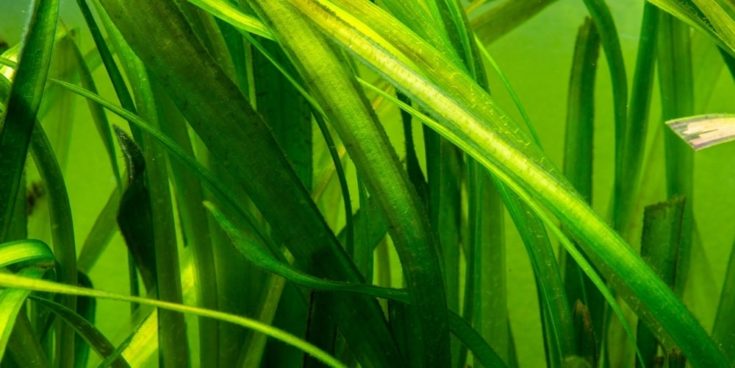
Vallis plants typically have long, thin, and almost ribbon-like leaves that have rounded tips with tiny, barely noticeable spikes on the end. The attractive and usually green leaves may grow straight or twisted into corkscrews, depending on the species, and form a loose wall of vegetation in your tank.
Their long leaves make them an ideal middle or background plant, and some types are especially suited to tall, narrow aquarium shapes that are otherwise a bit of a challenge to plant. Depending on the species, their leaves can reach from 6 to over 60 inches in length but, as true aquatics, will stay entirely inside your tank!
6 Common Types of Vallis for Aquariums
While there are over 30 species of Vallis currently recognized, only 6 are usually sold for aquariums. These species differ primarily in the shape and length of their leaves, but may also exhibit different shades and colors depending on their water conditions. Some species are more cold tolerant than others or prefer higher levels of alkalinity.
Straight Leaf Vallis: Italian Val vs Jungle Val
One of the most popular and easy to care species is the Vallisneria spirallis, also known as the Italian or Straight Vallis. Italian Val aquarium plants can reach up to 20 inches and are often available in a brilliant red color morph. Aquascapers appreciate V.spirallis for its use as a colorful background plant in smaller tanks.
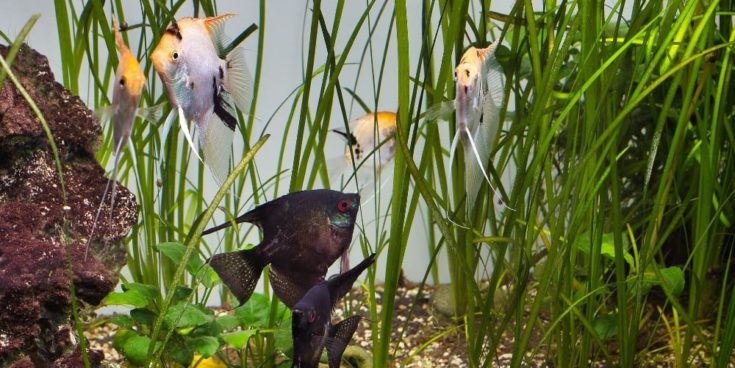
In contrast, Vallisneria americana or the Jungle Val has wider leaves that can grow up to 5 feet long! Jungle Vallis can rapidly take over even very large tanks. The long leaves may float on the surface of the water and block your lights if they are not trimmed back regularly.
There’s also a smaller straight-leafed Australian species, V.nana, that only reaches between 12 and 20 inches and makes a beautiful choice as a background plant in small tanks. You could also use it in the middle of a larger tank to create the appearance of a grassy meadow.
Corkscrew Varieties of Vallis
Many types of Vallis have shorter, tightly twisted leaves that add a lovely texture to an aquarium. V. fortifolia is a dwarf version perfect for nano tanks, while V. torta and V. asiatica only reach about 20-inches and fit well in tank’s 10-gallons and up.
Val. Species
V. fortifolia
V. spirallis
V. americana
V. torta
V. nana
V. asiatica
Size Range (height)
6 to 8 inches
11 to 20 inches
19 to 60 inches
up to 20 inches
12 to 20 inches
12 to 20 inches
Leaf Shape
Thin and tightly coiled
Narrow and straight
Wide and straight
Thin and twisted
Thin and grass-like
Short and twisted
Color
Green
Pale Green to Red
Green
Green
Dark Green
Green
Ideal Placement
Mid to Back
Back
Back
Mid to Back
Mid to Back
Mid to Back
Tank Size
5 to 30 gallons
20 gallons and up
100 gallons and up
10 gallons and up
10 gallons and up
10 gallons and up
Val. Species
V. fortifolia
Size Range (height)
6 to 8 inches
Leaf Shape
Thin and tightly coiled
Color
Green
Ideal Placement
Mid to Back
Tank Size
5 to 30 gallons
Val. Species
V. spirallis
Size Range (height)
11 to 20 inches
Leaf Shape
Narrow and straight
Color
Pale Green to Red
Ideal Placement
Back
Tank Size
20 gallons and up
Val. Species
V. americana
Size Range (height)
19 to 60 inches
Leaf Shape
Wide and straight
Color
Green
Ideal Placement
Back
Tank Size
100 gallons and up
Val. Species
V. torta
Size Range (height)
up to 20 inches
Leaf Shape
Thin and twisted
Color
Green
Ideal Placement
Mid to Back
Tank Size
10 gallons and up
Val. Species
V. nana
Size Range (height)
12 to 20 inches
Leaf Shape
Thin and grass-like
Color
Dark Green
Ideal Placement
Mid to Back
Tank Size
10 gallons and up
Val. Species
V. asiatica
Size Range (height)
12 to 20 inches
Leaf Shape
Short and twisted
Color
Green
Ideal Placement
Mid to Back
Tank Size
10 gallons and up
Habitat and Water Preferences
Vallis are generally undemanding plants and don’t require a lot of special care, which makes them ideal for first-time aquascapers. They are not low-light aquatic plants, however, and grow best under moderate to intense lighting conditions.
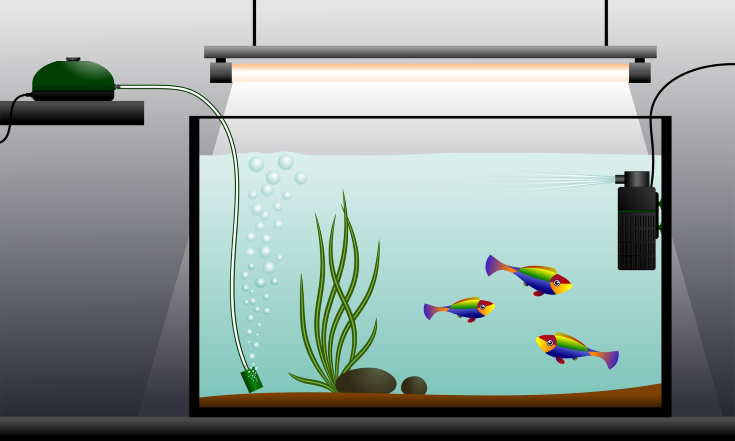
Like all aquatic plants, they do best in well-filtered water that is changed on a regular schedule. They prefer hard, alkaline water and don’t thrive in acidic or soft water conditions. Enriching your aquarium water with a CO2 diffuser may bring out the reddish shades in your V.spiralis and help encourage growth in all types of Vallis.
For fertilization, I find it’s best to use a complete plant substrate with plenty of iron, and slip a fertilizer tablet under the root ball when planting. If using a sand-based substrate, you may want to hide a layer of iron-rich gravel and small pebbles underneath to improve the water circulation throughout.
Growth and Propagation
Vallis leaves grow from the crown in a rosette pattern, similar to lettuces and cabbages. When planting your Vals, it’s best to gently push the roots and crown into the substrate with your fingers or an aquascaping tool, and then pull up until the crown sits right above the surface. If it’s under the gravel, your plant won’t grow.
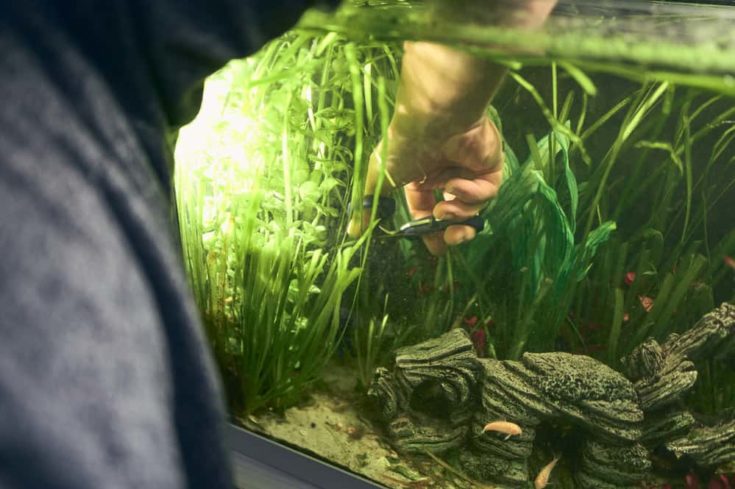
Vallis spreads by sending out runners, which take root in your substrate and grow into new plants. These runners can quickly take over your tank if you don’t pinch them back. You’ll also need to prune the leaves regularly by pinching or cutting them off near the crown.
Vals Produce Flowers and Seeds
Vallis species produce both male and female plants with white flowers. The female flowers float on the surface, while the smaller underwater male flowers break off and float in the water. Once the female flowers are fertilized, they produce a seed pod which can be collected and saved for future propagation.
Health
Vallis are not prone to any specific diseases or health issues, and the most common problems are an overgrowth of algae on the leaves or slowed growth due to low light conditions. While other plant’s leaves may turn brown from nutritional deficiencies, this isn’t typically a problem with the undemanding Vallis species.
Benefits of Having Vallis in Your Tank
Aquatic plants like Vallis provide a lot of benefits to your freshwater tank beyond their beautiful appearance:
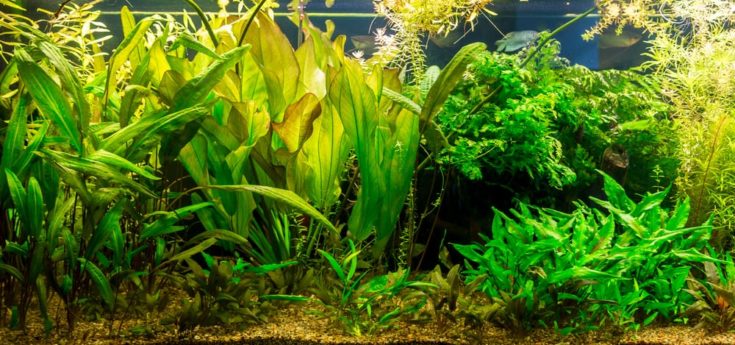
- Plants produce oxygen and use the carbon dioxide produced by your fish and invertebrates
- Their roots provide an ideal home to the good aquatic bacteria that help regulate your tank’s nitrogen cycle, and also prevent Dead Zones in your substrate
- They also provide shelter to organisms in your tank
What Do You Need to Grow Vallis?
You don’t need a lot of fancy tools or gadgets to grow a thriving Vallis aquascape. Here’s a list of the supplies you’ll need to start your own underwater garden:
- Aquarium (size depends on the species you plan to keep)
- Light fixture
- Filtration system
- Aquatic plant substrate (soil, sand or iron-rich gravel)
Optional but helpful supplies can include:
- Heater
- CO2 diffuser
- Aquascaping and pruning tools
- Fertilizer tabs or liquid fertilizer
Common Name (species)
Vallisneria, Vallis, Val, Eelgrass, Tape Grass
(multiple Vallisneria sp)
Family
Hydrocharitaceae
Origin
Found in subtropical regions around the world, including North America, Australia, Asia, Africa and Europe
Difficulty
Easy to Moderate
Maximum Size
6 to 60 inches
Temperature Range
64 to 82°F
pH Range
6.0 to 9.0
Water Hardness
4 dGH and up; Prefers hard water
Light Requirements
Moderate to Intense
Compatibility
Ideal for community or shrimp tanks, and raising fry. Digging bottom dwellers or single-tail goldfish may cause problems by uprooting plants. Aquatic snails will likely eat the leaves
Ideal Tank Placement
Middle to Back
Propagation
Runners and Seeds
Conclusion
As you can see, Vallis is an ideal choice for aquascaping and planted community tanks, and it doesn’t take a green thumb or a lot of expensive equipment to grow and propagate. We’d love to hear about your experiences with this beautiful aquatic plant, so join us on social media or drop a comment below!
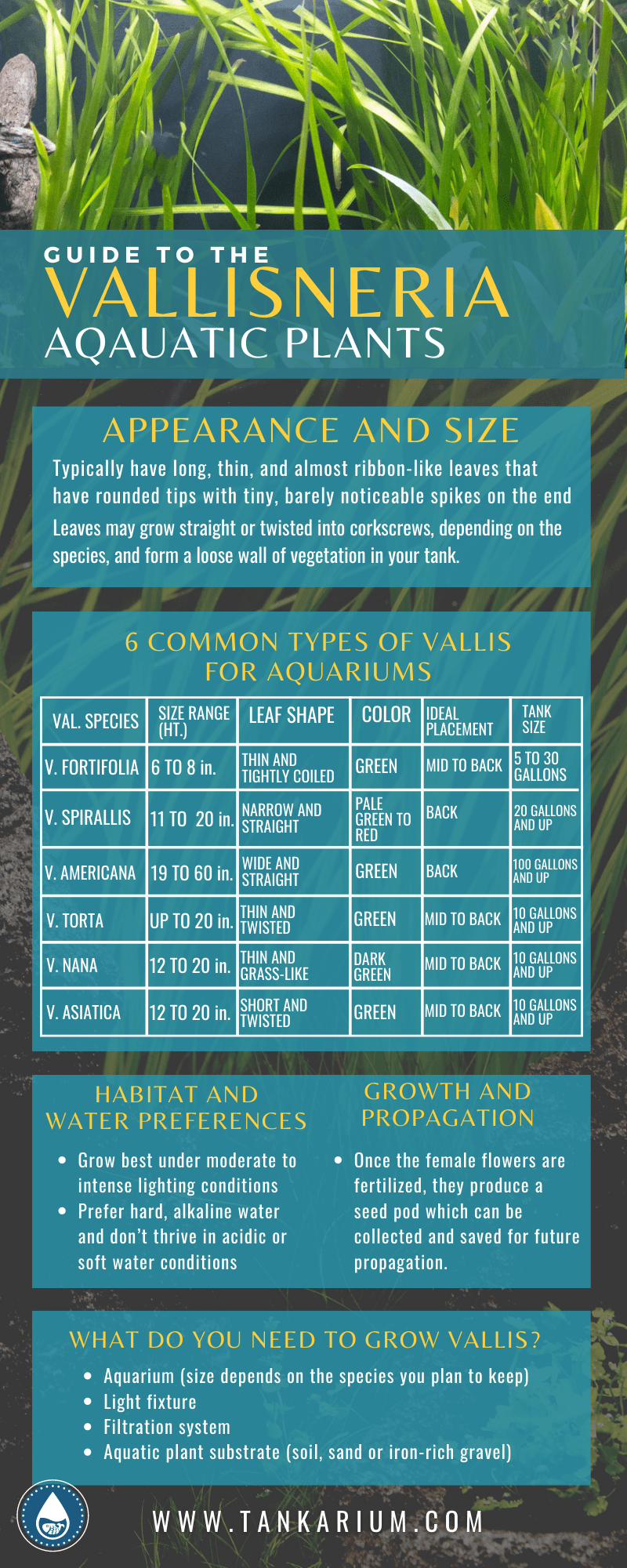

I love this website! Great job, thank you for the info. I wanted to ask if there is a specific light I should use under the hood of my tank? Or, can I use the stock light that my aquarium beginner kit came with (it is NOT an LED light either that came with the kit). Thanks a lot!
Hi Alexander; thanks for the question! I can’t point to a specific type or brand of light bulb without knowing the details of your light fixture, since it depends on whether it uses fluorescent, compact fluorescent or metal halide bulbs (we know it isn’t an LED, lol).
From what you did describe, I’m going to guess your kit came with a standard fluorescent bulb that produces a full spectrum of light. These bulbs usually work well for highlighting fish and growing the easy or low-light plants, but they don’t always produce the right spectrum of light for the more challenging plants.
If you’re having problems with your plant growth, you could swap it out with a product designed specifically for plants, often referred to as a plant bulb. But these products can also alter the appearance of your aquarium. Your fish may not stand out as much, since “plant lights” are heavy in the red/blue side of the spectrums and don’t produce a full range.
For what it’s worth, I’ve tried using both full spectrum and plant specific bulbs over the years and I was honestly happier with the full spectrum. I didn’t see much boost in my plant growth when using the plant bulbs, at least not enough to offset the change in my tank’s appearance. If your hood accommodates several bulbs, you could use a plant bulb in one and full spectrum in the others, to balance things out.
So I wouldn’t just jump to replace the standard bulb with a special plant bulb unless you’re unhappy with your plant’s current rate of growth. But if you do see problems with your plant growth or want to focus on the really challenging plants, then it may be worth it to try a few different types of bulbs and see how they change things. It’s often a game of trial and error, though. I hope this helps!